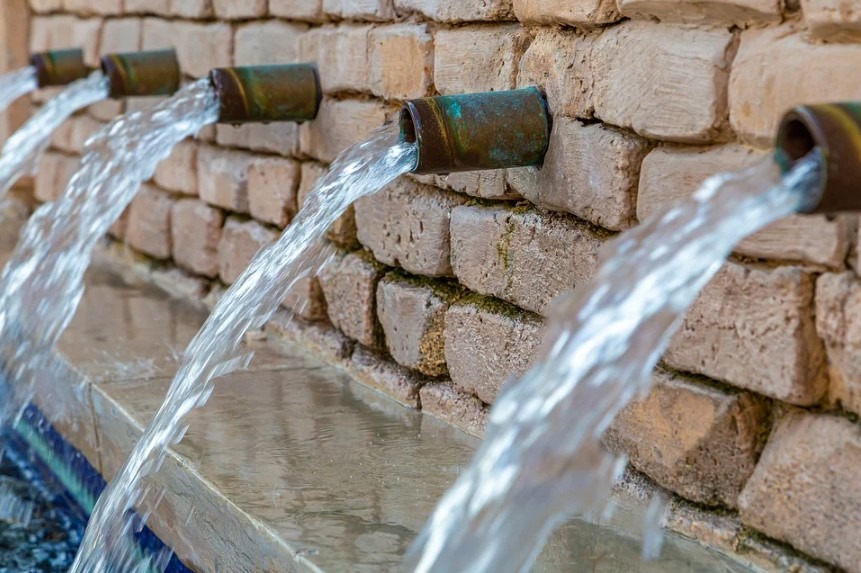When we think of natural substances, the media would have us thinking that everything natural is good when in fact this isn’t the case at all. High levels of lead in our water courses isn’t good for us or the natural environment so we need to make sure that we can filter it out effectively before it enters our systems. If children are exposed to high concentrations of lead for a period of time, we can see the impacts on their health and welfare, including but not limited to: reduced IQ, Attention disorder and problems related to general behaviour.
In adults it can show up problems with the red blood cell count as well as issues with our kidneys, so how can we make sure we filter out lead from our water?
Don’t worry here are 7 sure fire ways to do it.
Source Where Your Water Comes From
This one sounds a little odd, but bears with us! Find out where the source of your water is and when the pipe work was put in place for it. If it was pre 1986, then the pipes used are held together by copper and solder fixtures which release lead in huge amounts. If you have found out that your water travels through these pipes, then you are best off buying bottled water to drink. This situation is very rare nowadays, but it is always worth checking as your first port of call.
Reverse Osmosis Treatment
A reverse osmosis system is relatively inexpensive and one of the best water treatment systems for removing lead. It has a membrane inside. This membrane is exceedingly dense and thick, which means the water has a hard time moving through it, so it effectively filters out larger particles, of which lead is one.
Carbon Filtration Treatment
Carbon filtration or activated carbon filtration is another filter system that removes particles of lead from your water. Activated carbon is carbon that has been treated with oxygen to open up millions upon millions of tiny pores in the carbon. It works by forcing the water through the bed of activated charcoal that resides at the bottom of the system. When the water is forced through, the bigger particles aren’t able to follow so it catches the lead and absorbs it in the substrate, through the tiny holes that the O2 created.
Flush Your Water System
Before you use your taps in your home, flush your water system, especially if they have been sat for more than 6 hours. That way you are removing the build-up of lead that may have occurred at the front of the front of the water supply. By flushing your system through, you may be able to remove a lot of the lead that has built up over the course of the day.
Distillation Systems
You can have a water distillation unit either inside or outside of your home depending on where you want it. Distillation works by heating up the water that is passing through it and then making sure that the vapour condenses in an area of the unit away from the water that you want to use. It is easier to have these units outside and not at the point of use in your home as you don’t always want to have warm water coming out of your taps.
Undercounter Purifiers
You can get hold of an under the counter purifiers at a relatively small cost that you are able to install yourself and switch the filters out without much help. These purifiers are an excellent way to help get lead out of your water system, especially if you use the correct filter. Before you install one, test your water first to make sure that the purifier will be enough to remove the lead that you have. From there you can then select a filter, most filters use coconut based activated charcoal to help remove the particles of lead, which as we have previously mentioned is an excellent way of doing it.
Shower Head Filters
We’ve naturally gravitated to drinking water, but lead can be just as damaging to our hair as well as our child’s natural neurological development. To help minimise the risk of lead, you can purchase showers with specialised filters in their heads. These shower heads pick up the lead particles and stop them being sprayed onto your hair and the rest of your body. This is an excellent way at mitigating the leads chances of damaging you and your family if you aren’t able to fit in an ‘at source’ lead remover such as a distiller or a carbon filtration system.
Final Thoughts
Prior to going out and buying the first unit that you see, have your water tested so that you know what level of lead you are dealing with. Once you are armed with this information you will be able to make a judgement that is appropriate and the best course of action. If your lead readings are exceptionally high, investigate where you get your water from and if the infrastructure is old. If it isn’t then ask a professional about what system may suit you and your family.
The distillation, reverse osmosis and carbon filtration can be fitted where the water source comes into your home or, at the point of where you turn on your taps, it really does depend on you. If you can’t have a unit that you are able to fit outside of your home, then it will also be worth investing in a filtered shower head to make sure that the lead is kept away from your hair and your head, as well as your children. Lead can be dangerous to both adults and children so it is always worth making sure that you can get the best system that you can afford to get.
Related Articles:

